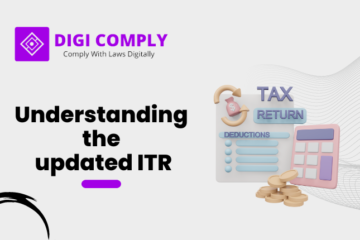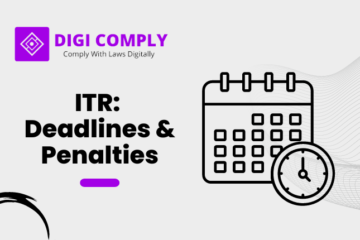Filing your income tax return is a crucial responsibility for every taxpayer, ensuring compliance with the tax laws and regulations of the country. However, sometimes, situations may arise where you make a tax payment after filing your ITR, leading to a discrepancy between the tax amount paid and the actual tax liability. In such cases, it’s essential to address the issue promptly and accurately to avoid any potential penalties or interest charges.
1. Await Intimation:
Once you have filed your ITR and made a subsequent tax payment, it is common for the tax authorities to send you an intimation notice. This notice serves as a formal communication to inform you about the variance between the tax amount paid and the actual tax liability as per your ITR. In your case, it would explicitly state the additional tax demand arising from the delayed payment.
2. Verify the Demand:
Upon receiving the intimation notice, exercise utmost diligence in reviewing its contents. The primary objective here is to verify the accuracy of the tax demand raised by comparing the tax amount you paid with the one mentioned in the notice. Take the time to cross-verify all the details provided in the notice with your own records, including income, deductions, and exemptions claimed during the filing process.
3. Reconcile the Tax Payment:
To effectively counter the tax demand mentioned in the intimation notice, it is crucial to gather all the relevant documents as evidence of the tax payment made after filing the ITR. These supporting documents may include a payment challan or acknowledgment receipt from your bank or the tax authority. Armed with these documents, calculate the correct tax liability, taking into account the payment made after filing.
4. Respond to the Intimation:
The next step involves submitting a formal response to the intimation notice. The exact procedure for this may vary depending on the tax authority in your country, but it typically involves logging in to the official income tax e-filing portal and navigating to the section dedicated to addressing outstanding tax demands. Once there, you will be presented with options such as “Agree” or “Disagree” with the demand raised. Select the appropriate option based on the validity of the intimation notice.
5. Provide Supporting Documents:
To support your claim of paying the correct tax, make sure to upload all required documents via the income tax e-filing portal. Apart from the payment challan, additional documents may be requested by the tax authorities to further verify your claim.
6. Follow Up:
After submitting your response and supporting documents, it is essential to stay proactive and regularly check the income tax e-filing portal for any updates. The tax authorities will carefully review the information provided by you, along with the supporting documents. If they find your claim valid, they will adjust the tax demand accordingly, bringing it in line with the correct tax liability. Conversely, if they require any further clarifications or additional actions from your end, they may reach out to you directly through the portal or other communication channels.
In conclusion, while making a tax payment after filing your ITR may lead to an unintended discrepancy, it is vital to address the situation promptly and accurately. By following the aforementioned steps and seeking guidance from a qualified tax professional or your local tax authority, you can ensure a smooth resolution of the issue and safeguard yourself from potential penalties or interest charges. As responsible taxpayers, it is crucial to remain vigilant and proactive in our tax affairs to maintain compliance with the tax laws and contribute to the smooth functioning of the nation’s economy.
If You have any queries then connect with us at support@legalsuvidha.com or info@digicomply.in & contact us & stay updated with our latest blogs & articles




